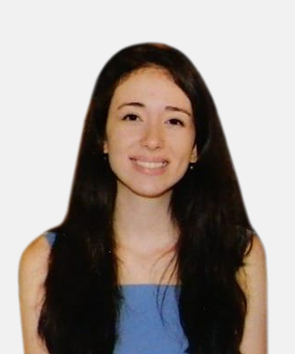Ağaoğlu, M. (2017) ‘Osmanlı Batılılaşması Bağlamında Mimar Mehmed Tahir Ağa’nın Mimarbaşılığı Döneminde İstanbul’da İnşa Edilmiş Eserler’ PhD thesis, University of İstanbul, İstanbul.
Alaboz, M., Bal, İ. E., Kutanis, M. (2014) ‘Structural Response Of Ortaköy Büyük Mecidiye Mosque In Istanbul’. 9th International Masonry Conference 2014, Guimarães, Portugal, pp. 1-13.
Anadolu Ajansı (2022, June 14) Mimar Sinan'ın 'şaheseri' Selimiye'de kapsamlı restorasyon sürüyor. 29th June, 2025 Retrieved from https://www.aa.com.tr/tr/kultur/mimar-sinanin-saheseri-selimiyede-kapsamli-restorasyon-suruyor/2613141.
Aslanapa, O. (1987). Türk Sanatı. İstanbul: Remzi Kitabevi.
Aslanapa, O. (1988). ‘Manisa Sultan Cami’. In Türk Kültürü Araştırmaları: Prof. Dr. Yaşar Önen’e Armağan. Türk Kültür Araştırma Enstitüsü Yayınları, p. 19-31.
Çiçek. T. (2024). Güzel Sanatlar Temelinde Selçuklu Camileri ve Osmanlı Camilerinin Form Olarak Farklılıklarının İncelenmesi. Türkiyat Araştırmaları Enstitüsü Dergisi- Journal of Turkish Researches Institute. 72, (September 2021). P. 173-187.
Durak S., Tupal, S. And Vural Arslan, T. (2016). Significance Of Cultural Heritage Preservation In Sustainable Cultural Tourism: Muradiye Complex In Bursa, Turkey. European Journal of Sustainable Development 5 (4). p. 1-12 ISSN: 2239-5938 DOI: 10.14207/ejsd.2016.v5n4p.
Encyclopædia Britannica (n.d.) The expansion of the Ottoman Empire. 29th June, 2025, Retrieved from https://www.britannica.com/place/Ottoman-Empire.
Hoskan, N., Yüksel, F. A., Görücü, Z., Çoruhlu, Y. (2010). Archaeogeophysical Studies in the Ruins of Kars-Ani (Turkey) in the 2009 Excavation Season. Paper presented at the International Conference of the European Geosciences Union.
EGU General Assembly, Vienna, Austria, 2-7 May, 2010, p.10113
Günay, R. (2002). Mimar Sinan ve Eserleri. İstanbul: Yapı Endüstri Merkezi Yayınları.
İnalcık, H. (2021). Osmanlı İmparatorluğu Üzerine Araştırmalar -I-II-III. İstanbul: Türkiye İş Bankası Kültür Yayınları.
İstanbul Metropolitan Municipality (n.d.). Selatin Camileri Projesi. 29th June, 2025, Retrieved from https://destekhizmetleri.ibb.istanbul/hizmetler/selatin-camileri-projesi/.
Kocabaş, A. Ö., Turgut, A., Erbilgin, T., Çardak, F. S. (2024). Afet Ve Savaş Sonrası Etkilenen Kültürel Mirasın Tarihi Çevrede Yeni Tasarım Bağlamında İncelenmesi: Dünya Örnekleri Üzerinden Habib-İ Neccar Cami İçin Tasarım Yaklaşımı Önerisi. ISPEC International Journal of Social Sciences and Humanities 8, (1). DOI:http://doi.org/10.5281/zenodo.10807656.
Kuban. D. (2013). Osmanlı’nın İstanbul’u: Osmanlı Başkenti İstanbul’u Simgeleyen 112 Yapı. İstanbul: YEM Yayınları.
Kuban, D. (1996). Bir Kent Tarihi İstanbul. İstanbul: Türkiye Ekonomik ve Toplumsal Tarih Vakfı Yayınları.
Kuban. D. (2013). Osmanlı’nın İstanbul’u: Osmanlı Başkenti İstanbul’u Simgeleyen 112 Yapı. İstanbul: YEM Yayınları.
Kuban, D. (2017). Sinan’ın Sanatı ve Selimiye. İstanbul: Türkiye İş Bankası Kültür Yayınları.
Kuban, D. (2021). Osmanlı Mimarisi. İstanbul: YEM Yayınları.
Kuyulu Ersoy , İ. (2025) "Pertevniyal Valide Sultan Camii" in "Discover Islamic Art". 29th June, 2025, Retrieved from https://islamicart.museumwnf.org/database_item.php?id=monument;isl;tr;mon01;30;tr.
Macaulay, D. (2003). Mosque. Boston: Walter Lorraine Books.
Ministry of İstanbul Islands (2023, August 31). Hamidiye Camii. 29th June, 2025, https://adalar.bel.tr/hamidiye-camii/.
MIT Libraries-Dome (n.d.) Uc Serefeli Mosque. 29th June, 2025, Retrieved from https://dome.mit.edu/handle/1721.3/50305.
MIT Libraries-Dome (n.d.) Sultan Selim Camii. 29th June, 2025, Retrieved from https://dome.mit.edu/handle/1721.3/65802.
Okur, A. (2010). Son Devir Osmanlı Mimarisinden Bir Kesit (Bezmialem Valide Sultan Camii) ve Restorasyonu. Vakıf Restorasyon Yıllığı 2010 (1), p.18-31. 29th June, 2025, Retrieved from https://isamveri.org/pdfdrg/D03505/2010_1/2010_1_OKURA.pdf.
Ortaylı, İ. (2019). Türklerin Tarihi. İstanbul: Timaş.
Ortaylı, İ. (2023). Osmanlı’yı Yeniden Düşünmek. İstanbul: Kronik.
Osmanlıoğlu, M. (2018) Bir Mimarın Kaleminden Camiler Kitabı. İstanbul: BüyüyenAy.
Özbek, Y. (2008). İdeolojinin İnşası: 15. - 16. Yüzyıl Osmanlı Selatin Camileri. Belleten 72 (264), 535-566. 16th April, 2025, Retrieved from https://belleten.gov.tr/tam-metin/60/tur.
Özsel. N. (2016). Evliya Çelebi’nin İzinde İstanbul Camileri: 100 Tarihi Cami. Ankara: Gece Kitaplığı.
Özyalvaç, A. N. (2020). Konya Sultan Selim ve İstanbul Yavuz Sultan Selim Camileri’nde Oran Araştırması ve Müellif Mimar Meselesi. International Journal of History Studies, 12 (4), p. 2117-2141.
Salt Research Archives (1940). Edirnekapı Mihrimah Sultan Camii vaziyet planı - Site plan of Mihrimah Sultan Mosque in Edirne. 29th June, 2025, Retrieved from https://archives.saltresearch.org/handle/123456789/75734.
Salt Research Archives (1941). Üsküdar Mihrimah Sultan Camii Planı - Plan of Mihrimah Sultan Mosque in Üsküdar. 29th June, 2025, Retrieved from https://archives.saltresearch.org/handle/123456789/70561.
Salt Research Archive (1946). Hüdavendigar Camii rölövesinin fotoğrafları, Bursa - Photographs of the survey of Hüdavendigar Mosque, Bursa. 29th June, 2025, Retrieved from https://archives.saltresearch.org/handle/123456789/75717.
Salt Research Archives (1949). Bursa Ulu Camii'nin 1949'daki vaziyetini gösteren bir kesit - A cross section portraying the Grand Mosque of Bursa in 1949. 29th June, 2025, Retrieved from https://archives.saltresearch.org/handle/123456789/85960.
Salt Research Archives (1949). Üsküdar Atik Valide Camii planı - Plan of Atik Valide Mosque in Üsküdar. 29th June, 2025, Retrieved from https://archives.saltresearch.org/handle/123456789/71460.
Türkiye Kültür Portalı (n.d.). Bursa Ulu Cami – Bursa. 29th June, 2025, Retrieved from https://www.kulturportali.gov.tr/turkiye/bursa/gezilecekyer/bursa-ulu-cami.
Salt Research Archives (n.d.). Kütahya Ulu Camii zemin katı planı, 1/100 - Ground floor plan of Kütahya Great Mosque, 1/100. 29th June, 2025, Retrieved from https://archives.saltresearch.org/handle/123456789/74832.
Salt Research Archives (n.d.). Edirne Eski Camii'nin planı - Blueprint of the Edirne Old Mosque. 29th June, 2025, Retrieved from https://archives.saltresearch.org/handle/123456789/92407.
Sanatın Yolculuğu (n.d.) Eminönü Yeni Valide Küllyesi (Yeni Cami). 9th June, 2025, Retrieved from https://www.sanatinyolculugu.com/eminonu-yeni-valide-kulliyesiyeni-cami/.
T.R. Bursa Governorship (n.d.-a) Tarihçe. 29th June, 2025, Retrieved from http://www.bursa.gov.tr/tarihce.
T.R. Bursa Governorship (n.d.-b) Ulucami; Osmanlı İmparatorluğu Döneminde Yapılmış Bütün Camilerin Atası. 29th June, 2025, Retrieved from http://www.bursa.gov.tr/ulucami.
T. R. Edirne Municipality (2011). Edirne Selimiye Camii Külliyesi Yönetim Planı 2011-2015. 29th June, 2025, Retrieved from http://www.kvmgm.gov.tr/Eklenti/57318,edirne-selimiye-camii-kulliyesi-yonetim-planipdf.pdf?0.
T.R. Ministry of Culture and Tourism, T. R. General Directorate of Foundations (n.d.) Aziziye Camii. 29th June, 2025, Retrieved fromhttps://www.vgm.gov.tr/tasinmaz-varliklar/konya-vakiflar-bolge-mudurlugu/test--aziziye-camii.
Turkish Religious Foundation (1987). Eminönü Camileri. Ankara: Diyanet Vakfı Yayınları.
Türker, M. N. (2022, May 26) Sarayı andıran bir cami: Yıldız Hamidiye Camii. Arkitekt. 29th June, 2025, Retrieved from https://www.gzt.com/arkitekt/sarayi-andiran-bir-cami-yildiz-hamidiye-camii-3649960.
Türkiye Tarih Atlası (n.d.). Viewed 29 June 2025, . https://f.eba.gov.tr/tarih_atlasi-I/ana/.
Uğurlu, A. H. (2019). “The Role of ‘Sacreds’ in the Political Agenda of the ‘Reformist’ Ottoman Sultan Selim III (r. 1789-1807)”. In Sacred Spaces and Urban Networks. S. Yalman, A. H. Uğurlu (Editors). Istanbul: ANAMED, p. 105–118.
Ürgen, O. (2018). Bursa Ulu Camii Mimari Özellikleri. (Unpublished Article) Hatay Mustafa Kemal University, Department of Art History, Faculty of Arts and Sciences.
Wegner, A. (1891). Die Moschee Sultan Selim’s II. zu Adrianopel und ihre Stellung in der osmanischen Baukunst. Berlin: Deutsche Bauzeitung. 29th June, 2025 Retrieved from https://lokalgeschichte.de/die-moschee-sultan-selims-ii-zu-adrianopel-und-ihre-stellung-in-der-osmanischen-baukunst.

